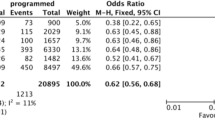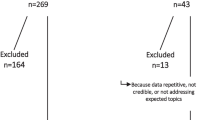Abstract
Objective: Our goal was to evaluate the of elective cryopreservation of all embryos to prevent the development of ovarian hyperstimulation syndrome in patients at risk while undergoing in vitro fertilization treatment.
Design: We analyzed 117 treatment cycles in which the serum E2 concentration on the day of hCG administration was >10,000 pM and in whom ≥15 oocytes were retrieved at ultrasound-directed follicle aspiration. The incidence of ovarian hyperstimulation syndrome, pregnancy, and live birth in 65 patients who had elective cryopreservation of all embryos and 52 patients who had fresh embryo transfer were compared. Independent t test and chi-square test (with Yates' correction) was used as appropriate.
Results: The clinical pregnancy (35 vs 17%; P<0.03) and the live birth (27 vs 12%; P<0.05) rates in patients receiving fresh embryo transfer was significantly higher than in those who had elective cryopreservation of all embryos. The incidence of moderate and severe ovarian hyperstimulation syndrome was similar in both groups (3.8 and 6.2%).
Conclusions: Elective cryopreservation of all embryos does not reliably protect against the development of ovarian hyperstimulation syndrome but may reduce the clinical pregnancy and live birth rate.
Similar content being viewed by others
References
Tan SL, Maconochie N, Doyle P, Campbell S, Balen A, Bekir J, Brinsden P, Edwards RG, Jacobs SJ: Cumulative conception and live birth rates after in vitro fertilization with and without the use of long, short and ultrashort regimes of the gonadotropin-releasing hormone agonist buserelin. Am J Obstet Gynecol 1994;171:513–520
Tan SL, Balen A, El Hussein E, Mills C, Campbell S, Yovich J, Jacobs HS: A prospective randomized study of the optimum timing of human chorionic gonadotropic administration after pituitary desensitization in in-vitro fertilization. Fertil Steril 1992;57:1259–1264
MacDougall MJ, Tan SL, Jacobs HS: In-vitro fertilization and the ovarian hyperstimulation syndrome. Hum Reprod 1992;7:597–600
Navot D, Relou A, Birkenfeld A, Rabinowitz R, Brzezinski A, Margalioth EJ: Risk factors and prognostic variables in the ovarian hyperstimulation syndrome. Am J Obstet Gynecol 1988;159:210–215
McClure N, Leya J, Radwanska E, Rawlins R, Haning RV Jr: Luteal phase support and severe ovarian hyperstimulation syndrome. Hum Reprod 1992;7:758–764
Tan SL: Luteinizing hormone-releasing hormone agonists for ovarian stimulation in assisted reproduction. Curr Opin Obstet Gynaecol 1994;6:166–172
Herman A, Ron-El R, Golan A, Raziel A, Soffer Y, Caspi E: Pregnancy rate and ovarian Hyperstimulation after luteal human chorionic gonadotropin in in-vitro fertilization stimulated with gonadotropin-releasing hormone analog and menotropins. Fertil Steril 1990;52:92–96
Amso NN, Ahuja KK, Morris N, Shaw RW: The management of predicted ovarian hyperstimulation involving gonadotropin releasing hormone analog with elective cryopreservation of all pre-embryos. Fertil Steril 1990;53:1087–1090
Pattinson HA, Hignett M, Dunphy BC, Fleetham JA: Outcome of thaw embryo transfer after cryopreservation of all embryos in patients at risk of ovarian hyperstimulation syndrome. Fertil Steril 1994;62:1192–1196
Wada I, Matson PL, Troup SA, Morroll DR, Hunt L, Lieberman BA: Does elective cryopreservation of all embryos from women at risk of ovarian hyperstimulation syndrome reduce the incidence of the condition. Br J Obstet Gynaecol 1993;100:265–269
Tan SL, Balen A, El Hussein E, Campbell S, Jacobs HS: The administration of glucocorticoids for the prevention of ovarian hyperstimulation syndrome in in-vitro fertilization: A prospective randomized study. Fertil Steril 1992;58:378–383
Schenker JG, Weinstein D: Ovarian hyperstimulation syndrome: A current survey. Fertil Steril 1978;30:255–268
Golan A, Ron-El R, Herman A, Soffer Y, Weinraub Z, Caspi E: Ovarian hyperstimulation syndrome; An update review. Obstet Gynecol Surv 1989;44:430–440
Moses M, Bogowsky H, Anteby E, Lunenfeld B, Rabau E, Serr D, David A, Salomy M: Thromboembolic phenomena after ovarian stimulation with human menopausal gonadotrophin. Lancet 1965;2:1213–1215
McClure N, Healy DL, Rogers PAW, Sullivan J, Beaton L, Haning RV Jr, Connolly DT, Robertson DM: Vascular endothelial growth factor as capillary permeability agent in ovarian hyperstimulation syndrome. Lancet 1994;2:235–236
Forman RG, Frydman R, Egan D, Ross C, Barlow DW: Severe ovarian hyperstimulation syndrome using agonists of gonadotropin-releasing hormone for in vitro fertilization: A European series and a proposal for prevention. Fertil Steril 1990;53:502–509
Blackstein J, Shalev J, Saadon T, Kukia EE, Rabinovici J, Pariente C, Lunenfeld B, Serr D M, Mashiach S: Ovarian hyperstimulation syndrome: Prediction by number and size of pr eovlatory ovarian follicles. Fertil Steril 1987;47:597–602
Dahl Lyons CA, Wheeler CA, Frishman GN, Hackett RJ, Seifer DB, Haning RV Jr: Early and late presentation of the ovarian hyperstimulation syndrome: two distinct entities with different risk factors. Hum Reprod 1994;9:792–799
Wada I, Matson PL, Troup SA, Hughes S, Buck P, Lieberman BA: Outcome of treatment subsequent to the elective cryopreservation of all embryos from women at risk of the ovarian hyperstimulation syndrome. Hum Reprod 1992;7:962–966
Asch RH, Li H, Balmaceda JP, Weckstein LN, Stone SC: Severe hyperstimulation syndrome in assisted reproductive technology: Definition of high risk groups. Hum Reprod 1991;6:1395–1399
Forman R, Fries N, Testart J, Bellaisch-Allart J, Hazout A, Frydman E: Evidence for adverse effect of elevated serum estradiol concentrations on embryo implantation. Fertil Steril 1988;49:118–112
Chenette PE, Sauer MV, Paulson RJ: Very high serum oestradiol levels are not detrimental to clinical outcome of in vitro fertilization. Fertil Steril 1990;54:858–863
Liu HC, Kreiner D, Muasher SJ, Jones G, Jones H, Roseward Z: Beta human chorionic gonadotropin as a monitor of pregnancy outcome in in vitro fertilization-embryo transfer patients. Fertil Steril 1988;50:89–94
Huisman GT, Leerentveld RA, Verhoeff A, Zeilmaker GH: Invitro fertilization results following transfer after 5 days of embryo culture. Hum Reprod 1994;9 (Suppl 4):Abstract 33
Fehilly CB, Cohen J, Simons RF, Fishel SB, Edwards RG: Cryopreservation of cleaving embryos and expanded blastocysts in the human: A comparative study. Fertil Steril 1985;4:638–644
Cohen J, Simons RS, Fehilly CB, Edwards RG: Factors affecting survival and implantation of cryopreserved human embryos. J Vitro Fert Embryo Transfer 1986;3:46–52
Vauthier-Brouzes D, Lefebvre G, Lesourd S, Gouzales J, Darbois Y: How many embryos should be transferred in in vitro fertilization. A prospective randomized study. Fertil Steril 1994;62:339–342
Author information
Authors and Affiliations
Rights and permissions
About this article
Cite this article
Awonuga, A.O., Pittrof, R.J., Zaidi, J. et al. Elective cryopreservation of all embryos in women at risk of developing ovarian hyperstimulation syndrome may not prevent the condition but reduces the live birth rate. J Assist Reprod Genet 13, 401–406 (1996). https://doi.org/10.1007/BF02066172
Received:
Accepted:
Issue Date:
DOI: https://doi.org/10.1007/BF02066172




